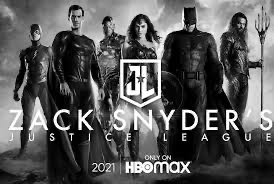Read our in-depth review of Zack Snyder’s Justice League (2021), the much-anticipated director’s cut of the DC superhero ensemble film. Does it live up to the hype? Find out here.

Introduction: A Redemption Arc for the DCEU
Zack Snyder’s Justice League, released in March 2021 on HBO Max (and globally on various platforms), is a landmark moment in modern pop culture. Originally intended to release in 2017, director Zack Snyder stepped away during post-production due to a personal tragedy, and Joss Whedon was brought in to complete the film. The result was the critically panned 2017 Justice League, a tonally inconsistent mess that failed to satisfy fans or critics.
However, after massive online fan campaigns under the hashtag #ReleaseTheSnyderCut, Warner Bros. allowed Snyder to return and complete his original vision—resulting in a four-hour epic that fundamentally redefines the narrative, tone, and scope of the Justice League’s formation.
Plot Summary (Spoiler-Free)
The story picks up after the death of Superman (Henry Cavill) in Batman v Superman: Dawn of Justice. His absence leaves Earth vulnerable, attracting a cosmic threat: Steppenwolf, a New God general working to unite three ancient “Mother Boxes” that will terraform the planet and pave the way for his master, Darkseid.
Batman (Ben Affleck) and Wonder Woman (Gal Gadot) embark on a mission to form a team of meta-humans to stop this existential threat. They recruit Aquaman (Jason Momoa), The Flash (Ezra Miller), and Cyborg (Ray Fisher), leading to the eventual resurrection of Superman and the formation of the Justice League.
Tone and Direction: Snyder’s Vision Unleashed
Unlike the 2017 version’s lighter tone, Snyder’s cut is darker, more emotionally grounded, and stylistically grand. The film is divided into six parts (plus an epilogue), which helps manage the extended runtime. Every character is given proper development, especially Cyborg, whose arc was largely erased in the theatrical version.
Zack Snyder brings his trademark visual flair—slow motion, stylized action, mythic framing—and marries it with deeper character motivations and world-building. The result feels operatic in scale, more like The Lord of the Rings of superhero films than your standard comic-book movie.
Performances: Every Hero Gets a Moment
- Ben Affleck is far more convincing and emotionally layered as Batman here than in the 2017 version. His arc from guilt to hope is believable and well-portrayed.
- Gal Gadot continues to impress as Wonder Woman, with enhanced combat scenes and leadership moments.
- Ray Fisher (Cyborg) emerges as the heart of the film. His backstory—dealing with loss, identity, and purpose—is powerfully written and performed.
- Ezra Miller’s Flash is still comic relief but now has emotional weight and one of the film’s most heroic scenes.
- Jason Momoa is more grounded as Aquaman, not just a macho surfer dude but a reluctant king-in-waiting.
- Henry Cavill’s Superman, though appearing late, is portrayed with divine might and moral clarity, especially in his black suit.
Even Steppenwolf, the villain, is vastly improved—both in CGI and motivation. He’s no longer a generic alien invader but a tragic figure seeking redemption from Darkseid.
Technical Brilliance: A Cinematic Spectacle
- Cinematography by Fabian Wagner is stunning. The 4:3 aspect ratio may be jarring initially but enhances the vertical scale of characters and action.
- Visual Effects are significantly improved. The battle scenes—especially the final showdown—feel earned, intense, and cinematic.
- Score by Tom Holkenborg (Junkie XL) replaces Danny Elfman’s 2017 soundtrack. It’s thunderous, emotional, and epic—perfectly complementing the film’s tone.
Themes: Hope, Redemption, and Unity
At its core, Zack Snyder’s Justice League is about unity and second chances. Each hero has a past they must reconcile with—Bruce Wayne’s guilt, Diana’s isolation, Victor’s tragedy, Barry’s insecurities. Together, they overcome loss, trauma, and cosmic terror to become something greater than the sum of their parts.
The film also explores deeper mythological and existential themes—life, death, and destiny—often with biblical undertones, which has become a Snyder signature.
What Works
- Full character development for all League members
- Improved villain and world-building
- Epic action sequences with emotional weight
- Cohesive story arc with emotional payoff
- A satisfying and bold conclusion
What Doesn’t Work
- The 4-hour runtime may deter casual viewers
- Some scenes could’ve been trimmed without major loss
- The epilogue feels disjointed and overly indulgent (especially the Knightmare sequence)
- Minimal screen time for Darkseid, teasing more than delivering
Audience Reaction & Legacy
The film received strong acclaim from both fans and many critics. It was seen not just as an improved version of Justice League, but as a symbol of creative redemption and fan power. Many now regard it as the definitive DCEU team-up film, vastly superior to the theatrical cut.
However, despite calls for a sequel or continuation (under #RestoreTheSnyderVerse), Warner Bros. has not announced plans to continue Snyder’s vision.
Final Verdict
Zack Snyder’s Justice League is a triumph of vision, patience, and perseverance. It’s not just a director’s cut—it’s a reimagining that adds heart, scale, and coherence to a once-broken film. While its length and tone may not suit everyone, for DC fans and those who appreciate mythic storytelling, it’s a richly rewarding experience.
Best Movie Review(BMR) Rating: 8.5/10